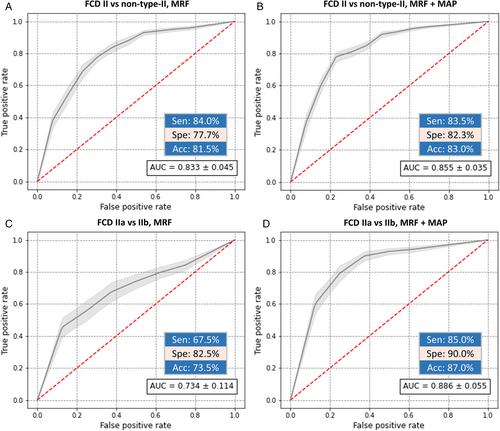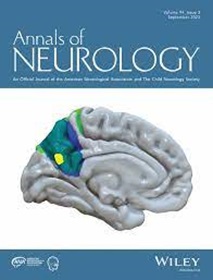To develop a multiparametric machine-learning (ML) framework using high-resolution 3 dimensional (3D) magnetic resonance (MR) fingerprinting (MRF) data for quantitative characterization of focal cortical dysplasia (FCD).
We included 119 subjects, 33 patients with focal epilepsy and histopathologically confirmed FCD, 60 age- and gender-matched healthy controls (HCs), and 26 disease controls (DCs). Subjects underwent whole-brain 3 Tesla MRF acquisition, the reconstruction of which generated T1 and T2 relaxometry maps. A 3D region of interest was manually created for each lesion, and z-score normalization using HC data was performed. We conducted 2D classification with ensemble models using MRF T1 and T2 mean and standard deviation from gray matter and white matter for FCD versus controls. Subtype classification additionally incorporated entropy and uniformity of MRF metrics, as well as morphometric features from the morphometric analysis program (MAP). We translated 2D results to individual probabilities using the percentage of slices above an adaptive threshold. These probabilities and clinical variables were input into a support vector machine for individual-level classification. Fivefold cross-validation was performed and performance metrics were reported using receiver-operating-characteristic-curve analyses.
FCD versus HC classification yielded mean sensitivity, specificity, and accuracy of 0.945, 0.980, and 0.962, respectively; FCD versus DC classification achieved 0.918, 0.965, and 0.939. In comparison, visual review of the clinical magnetic resonance imaging (MRI) detected 48% (16/33) of the lesions by official radiology report. In the subgroup where both clinical MRI and MAP were negative, the MRF-ML models correctly distinguished FCD patients from HCs and DCs in 98.3% of cross-validation trials. Type II versus non-type-II classification exhibited mean sensitivity, specificity, and accuracy of 0.835, 0.823, and 0.83, respectively; type IIa versus IIb classification showed 0.85, 0.9, and 0.87. In comparison, the transmantle sign was present in 58% (7/12) of the IIb cases.
The MRF-ML framework presented in this study demonstrated strong efficacy in noninvasively classifying FCD from normal cortex and distinguishing FCD subtypes. ANN NEUROL 2024;96:944–957



